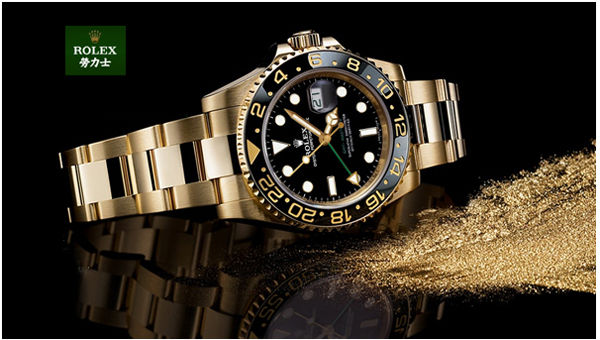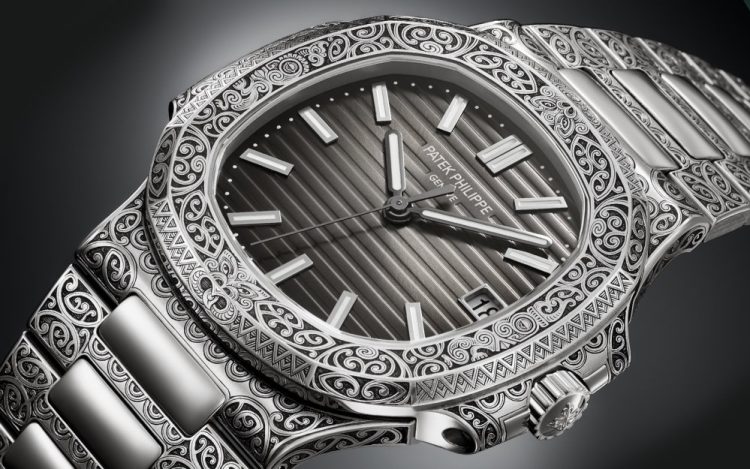Introduction
In the world of luxury watchmaking, Rolex and Patek Philippe are two of the most revered names, each known for their exceptional craftsmanship, heritage, and prestige. While both brands have earned a reputation for producing some of the finest timepieces ever made, they approach technology and innovation in distinctly different ways. Whether you’re a seasoned collector or a first-time buyer, the technological capabilities of these watches play a crucial role in determining which brand offers the most advanced, reliable, and sophisticated timekeeping.
In this article, we will take an in-depth look at the technological features of Rolex and Patek Philippe watches, comparing their movement innovations, materials, accuracy, complications, and overall engineering. We will examine the philosophy behind each brand’s approach to watchmaking and explore how their technological advancements have impacted the world of horology. This comparison will also provide insights into the practicality, durability, and precision of their respective timepieces, helping you understand how each brand balances tradition with modernity.
By the end of this article, you’ll be equipped with a comprehensive understanding of Rolex’s and Patek Philippe’s technological capabilities, helping you decide which brand’s innovations stand out in the world of haute horology.
Chapter 1: Rolex’s Technological Advancements
1.1 The Rolex Philosophy: Precision, Durability, and Innovation
Rolex has built its reputation on the foundation of reliability, innovation, and precision. Known for its robust designs and practical functionality, Rolex has consistently incorporated new technologies into its watches without compromising its identity. The brand’s primary focus is on improving the wearer’s experience through groundbreaking technologies that enhance durability, performance, and accuracy.
Rolex’s focus on self-sufficiency has allowed the company to maintain complete control over its movements, materials, and manufacturing processes. Innovations like the Oyster case, the Perpetual movement, and the Cerachrom bezel have not only defined Rolex but also set standards for the watchmaking industry as a whole.
1.2 Rolex Movements: In-House Excellence
At the heart of every Rolex timepiece lies the movement. Rolex is renowned for its ability to design, develop, and manufacture its own movements in-house, ensuring the highest level of precision and reliability.
- Caliber 3135: One of the most iconic movements, the Caliber 3135, is an automatic movement that has powered the Rolex Submariner, Datejust, and other models for decades. It features a perpetual rotor, self-winding mechanism, and a chrono balance wheel that helps to keep timekeeping accurate over long periods.
- Caliber 3255: The Caliber 3255, featured in the Rolex Day-Date, boasts a superlative chronometer certification, which guarantees an accuracy of -2/+2 seconds per day. This level of precision is achieved through the use of an innovative Chronergy escapement, which offers greater efficiency and reduces energy loss.
1.3 Rolex’s Key Technological Innovations
1.3.1 The Oyster Case: Water Resistance and Durability
The Oyster case, introduced by Rolex in 1926, is one of the most important technological breakthroughs in the history of horology. The Oyster case was the first hermetically sealed case, making Rolex watches water-resistant for the first time. This revolutionary design is still used in virtually every Rolex model today.
- Water Resistance: The case uses a screw-down crown, a fluted bezel, and a sealed case back to ensure a perfect seal, which helps prevent water and dust from entering the watch. The Oyster case has become a hallmark of Rolex’s commitment to durability and precision in challenging environments.
1.3.2 The Perpetual Movement: Self-Winding Technology
Rolex’s Perpetual movement was introduced in 1931 and revolutionized the world of watchmaking. The perpetual movement relies on a rotor that winds the mainspring automatically with the motion of the wearer’s wrist. This eliminates the need for a manual winding mechanism and ensures that the watch remains powered as long as it is worn.
- Energy Efficiency: The movement’s design allows for continuous, automatic winding, making it an ideal solution for those who wear their Rolex watches every day. The perpetual movement is incredibly efficient, reducing the need for external energy sources, which enhances both accuracy and durability.
1.3.3 The Cerachrom Bezel: Scratch Resistance
In 2005, Rolex introduced the Cerachrom bezel made from ceramic. This technological innovation significantly improved the durability of the watch’s bezel. Unlike traditional aluminum bezels, Cerachrom is highly resistant to scratching, fading, and corrosion. It also maintains its aesthetic beauty and color over time, ensuring that the watch retains its pristine appearance.
- High-Performance Bezel: The Cerachrom bezel is most commonly seen on the Rolex Submariner and GMT-Master II models. It is not only resistant to scratches but also features graduated numerals that are laser-etched into the ceramic, further enhancing its legibility and longevity.
1.3.4 Parachrom Hairspring: Resistance to Magnetic Fields
Rolex’s Parachrom hairspring is another significant technological innovation that contributes to the precision and reliability of its movements. Made from a unique alloy that is resistant to magnetic fields, shocks, and temperature fluctuations, the Parachrom hairspring helps ensure that the Rolex timepieces maintain accuracy over time.
- Magnetic Resistance: The Parachrom hairspring improves the watch’s ability to resist external influences that might otherwise disrupt the timekeeping, particularly magnetic fields, which are common in modern environments.

Chapter 2: Patek Philippe’s Technological Mastery
2.1 Patek Philippe’s Approach to Innovation: Tradition Meets Modernity
Patek Philippe, founded in 1839, is a brand known for its commitment to tradition and craftsmanship. However, unlike Rolex, Patek Philippe often emphasizes complicated movements and artisanal watchmaking. While Rolex’s technological innovations focus on practicality and durability, Patek Philippe tends to focus on technical mastery, horological complications, and the ability to push the boundaries of mechanical artistry.
Patek Philippe is known for creating some of the most complicated and precise movements in the world. The brand’s Grand Complications series is an embodiment of its technical expertise, featuring everything from minute repeaters to tourbillons and perpetual calendars.
2.2 Patek Philippe Movements: Excellence in Complications
Unlike Rolex, Patek Philippe is widely regarded for creating intricate and sophisticated movements that often feature multiple complications within a single timepiece. The brand produces movements that are considered the pinnacle of watchmaking, blending innovation with artistry.
- Caliber 240: The Patek Philippe Caliber 240 is an ultra-thin, self-winding movement with a micro-rotor, allowing the movement to be both compact and efficient. This caliber is featured in many of Patek’s thin watches, such as the Calatrava and Golden Ellipse collections.
- Caliber 89: One of Patek Philippe’s most famous movements, the Caliber 89, contains an astonishing 33 complications, including a perpetual calendar, a moonphase display, and a minute repeater. This movement is a testament to the brand’s commitment to pushing the limits of horological complexity.
2.3 Patek Philippe’s Key Technological Innovations
2.3.1 The Perpetual Calendar: A Tribute to Precision
Patek Philippe is well-known for its perpetual calendars, which automatically adjust for leap years and account for months with different numbers of days. These watches are designed to be accurate for a lifetime without the need for manual correction, making them highly sought-after by collectors.
- Complexity and Precision: The perpetual calendar complication is a hallmark of Patek Philippe’s ability to integrate technical complexity with the aesthetic elegance of its timepieces.
2.3.2 The Tourbillon: Precision in Motion
The tourbillon is a mechanism that was originally designed to improve the accuracy of pocket watches by compensating for gravity’s effects on the escapement. Patek Philippe’s tourbillons, such as those found in their Grand Complications series, are renowned for their exceptional precision and mechanical artistry.
- Highly Complicated Movements: The tourbillon is an intricate feature that is highly appreciated by collectors and watch aficionados for both its mechanical sophistication and its beauty.
2.3.3 The Patek Philippe Minute Repeater: Sounding the Time
Another example of Patek Philippe’s innovative craftsmanship is the minute repeater. This complication allows the watch to chime the time aloud by activating a lever that strikes a series of gongs. The minute repeater is considered one of the most challenging complications to master and showcases Patek Philippe’s dedication to acoustic technology and mechanical perfection.
- Musical Mastery: The minute repeater watches from Patek Philippe not only tell time but also offer a sonorous experience, delivering the time in the form of chimes and bells.
Chapter 3: Comparing Rolex and Patek Philippe: Technology, Innovation, and User Experience
3.1 Core Technological Differences
- Movement Philosophy: Rolex focuses heavily on durability, self-sufficiency, and reliability. Its innovations like the Perpetual movement and Cerachrom bezel enhance practicality and performance for the everyday wearer. In contrast, Patek Philippe specializes in complicated movements and artisanal craftsmanship, creating watches with features such as tourbillons and minute repeaters that appeal to those seeking mechanical artistry.
- Innovation vs. Tradition: Rolex often leads in technological advancements for the everyday wearer, emphasizing efficiency, accuracy, and material durability. Patek Philippe, on the other hand, emphasizes the preservation of tradition while introducing technical marvels that push the boundaries of what is possible in watchmaking.
- Complications and Materials: While Rolex has invested heavily in materials science (such as the Cerachrom bezel and Oystersteel), Patek Philippe remains the leader in terms of complications, featuring complex mechanisms like minute repeaters, perpetual calendars, and tourbillons in their collections.
3.2 The End User Experience
- Rolex watches are known for their practicality and reliability, offering user-friendly technology for those who need a watch that performs consistently over time. Patek Philippe, however, offers a luxury experience steeped in horological prestige, catering to collectors who appreciate the complexity and artistry of their movements.
Conclusion
When comparing Rolex and Patek Philippe in terms of technological innovation, it’s clear that both brands have made monumental contributions to the world of watchmaking. Rolex focuses on practical advancements that enhance durability, performance, and accuracy, while Patek Philippe pushes the boundaries of complexity and mechanical artistry. Both brands stand as icons in horology, offering distinct yet equally exceptional technological achievements. Ultimately, the choice between Rolex and Patek Philippe will depend on the buyer’s personal priorities—whether they are seeking precision and practicality or complications and artistic craftsmanship.





































